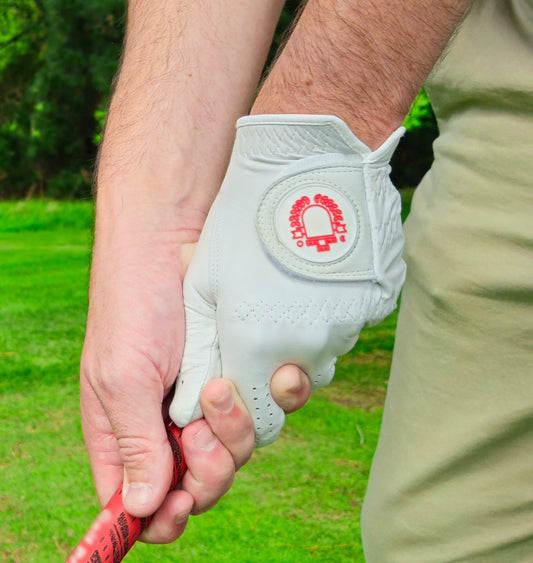Golf Terms and Phrases Every Player Should Know
Golf, a sport steeped in history and tradition, has developed its own rich lexicon over the years. For both casual and professional golfers, mastering this terminology is crucial for understanding the game and communicating effectively on the course. From basic terms to more nuanced phrases, golfers use a variety of expressions to describe their experiences and strategies during play. In this blog post, we’ll dive into essential golf terminology and phrases that every golfer should know.
Tee Box
The tee box is where every hole begins. It's the designated area where a player takes their first stroke. Each hole on the course has a tee box, and the position of the tees often varies depending on the golfer’s skill level (e.g., championship tees for professionals and forward tees for beginners).
Fairway
The fairway is the closely mown area between the tee box and the green. Ideally, this is where golfers aim their shots after teeing off. A shot that lands in the fairway makes the next stroke easier, as the ball sits on short grass, providing a clean strike.
Green
The green is the area surrounding the hole, where the grass is cut extremely short to allow for smooth putting. Once on the green, players use a putter to guide the ball into the hole. The condition of the green can significantly affect putting, with fast greens causing the ball to roll more quickly.
Hole
While it may seem obvious, the term "hole" refers to both the physical hole in the ground and the entire section of the course being played, from the tee box to the green. Golf courses typically feature 18 holes, with par values assigned to each one.
Par
Par is the standard number of strokes that an expert golfer is expected to take to complete a hole. A typical course will have holes ranging from par 3 to par 5, with par being adjusted based on the length and difficulty of each hole. If you finish a hole in the designated number of strokes, you’ve made par.
Understanding golf scoring is critical to following or playing the game, whether you're watching a professional tournament or competing in a casual round with friends. The terminology used to describe scores relative to par is as follows:
Birdie
A birdie is a score of one stroke under par on a hole. For example, completing a par 4 hole in three strokes earns you a birdie. This term is a positive outcome in golf and is often celebrated as a sign of strong play.
Eagle
An eagle occurs when a golfer finishes a hole in two strokes under par. For instance, on a par 5 hole, completing it in three strokes would be considered an eagle. This achievement is rarer than a birdie and is a hallmark of exceptional skill.
Bogey
A bogey is when a golfer completes a hole in one stroke over par. While not ideal, bogeys are common, especially for amateur players. A double bogey means the golfer took two strokes over par, while a triple bogey is three strokes over par.
Albatross (or Double Eagle)
This is one of the rarest scores in golf, signifying that a golfer has completed a hole in three strokes under par. For example, finishing a par 5 in two strokes would be an albatross. The difficulty of achieving this makes it a highly respected score in the game.
Ace (Hole-in-One)
An ace, also known as a hole-in-one, is the most thrilling score in golf, occurring when a golfer sinks the ball with a single stroke from the tee. Most commonly occurring on par 3 holes, aces are celebrated with great enthusiasm and sometimes with gifts to playing partners.
Mastering a variety of shot types is essential for any golfer, as each course presents its own unique challenges. Understanding the following terms can help you navigate the different situations you might face on the course.
Drive
A drive is a powerful shot taken from the tee box, typically using a driver. The goal is to hit the ball as far down the fairway as possible to set up a manageable second shot. Professional golfers can often drive the ball over 300 yards.
Chip
A chip shot is a short, controlled shot typically played from close to the green. The goal of a chip is to loft the ball into the air briefly before allowing it to roll toward the hole. This shot is commonly used when a player is just off the green but doesn’t want to putt from that distance.
Putt
A putt is a gentle stroke used when the ball is on the green. Using a putter, golfers aim to roll the ball into the hole. Putting requires a great deal of precision and touch, as even small mistakes can cause the ball to miss the hole.
Approach Shot
The approach shot is the stroke intended to land the ball on the green. After the drive, the approach shot is typically taken with a mid- or short-iron, depending on the distance remaining to the green. Accuracy is crucial in approach shots to avoid hazards and land the ball in a favorable putting position.
Pin High
A ball is considered "pin high" when it finishes level with the flagstick (the "pin") but off to the side, either to the left or right. The term refers to the ball being the correct distance from the tee or from the previous shot, even if the shot didn’t land directly near the hole. Golfers often use this term to describe a well-judged shot, even if it's slightly offline, because the distance control was accurate. For instance, if your approach shot lands on the green but off to the side of the hole at the same depth, your ball would be "pin high."
Bunker Shot
When a golfer’s ball lands in a bunker, they must use a bunker shot to escape. Bunker shots are tricky because they require hitting the sand before the ball to help lift it out of the hazard. A special club, called a sand wedge, is usually used for these shots.
Beyond the technical terms, golfers frequently use slang and phrases to describe their shots, the course conditions, and their mental state. Here are some popular expressions you might hear on the course.
Mulligan
A mulligan is an informal term used in casual golf to describe a do-over. If a player hits a poor shot, they may take a mulligan, meaning they get a second chance without counting the first shot. Mulligans are not permitted in official play, but they’re often used during friendly rounds.
Fore!
When a golfer hits a ball that might strike someone, they yell “fore!” as a warning. This phrase is used to alert other golfers and spectators to watch out for the ball. It’s one of the most well-known and widely used phrases in golf, signaling both courtesy and safety.
Lip Out
A lip out occurs when a putt rolls around the edge of the hole but fails to drop in. This is one of the most frustrating experiences in golf, as it often happens on putts that look like sure makes. Lip outs can turn what would have been a birdie into a par or worse.
Shank
A shank is a disastrous shot where the golfer strikes the ball with the hosel (the part where the clubhead connects to the shaft) instead of the clubface. This results in the ball veering off at an awkward angle, often far from the intended target. Shanking is one of the most dreaded mistakes in golf.
Up and Down
"Up and down" refers to the process of getting the ball onto the green and into the hole in two strokes. For example, if you miss the green on your approach but then chip the ball close and sink the putt, you've successfully gotten "up and down." It's an essential skill for saving par after a missed green.
Golf’s rich terminology reflects the complexity and nuance of the game. Whether you’re a beginner learning the basics or a seasoned pro refining your skills, understanding these terms can help you navigate the course more confidently and communicate effectively with other golfers. From scoring terms like birdies and bogeys to shot types like drives and chips, each word carries with it the tradition and spirit of the sport. So the next time you're out on the course, keep these terms in mind and you'll not only play better, but you'll also sound like a pro!




